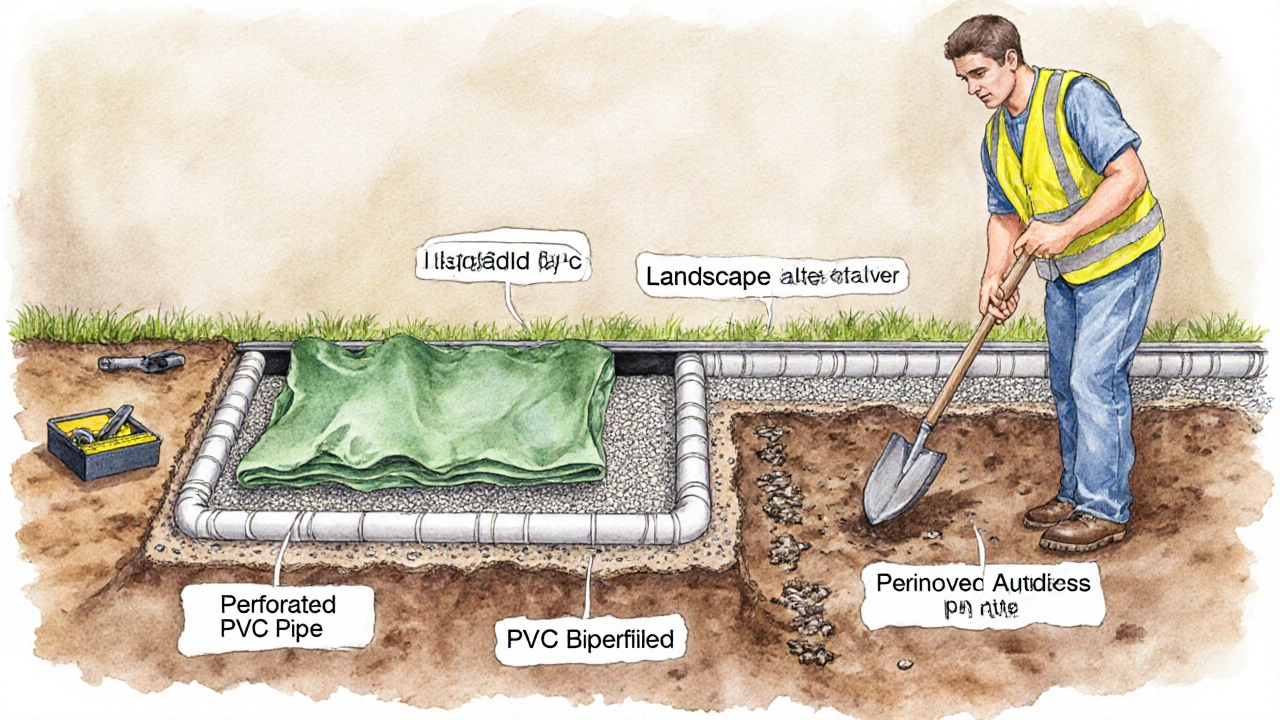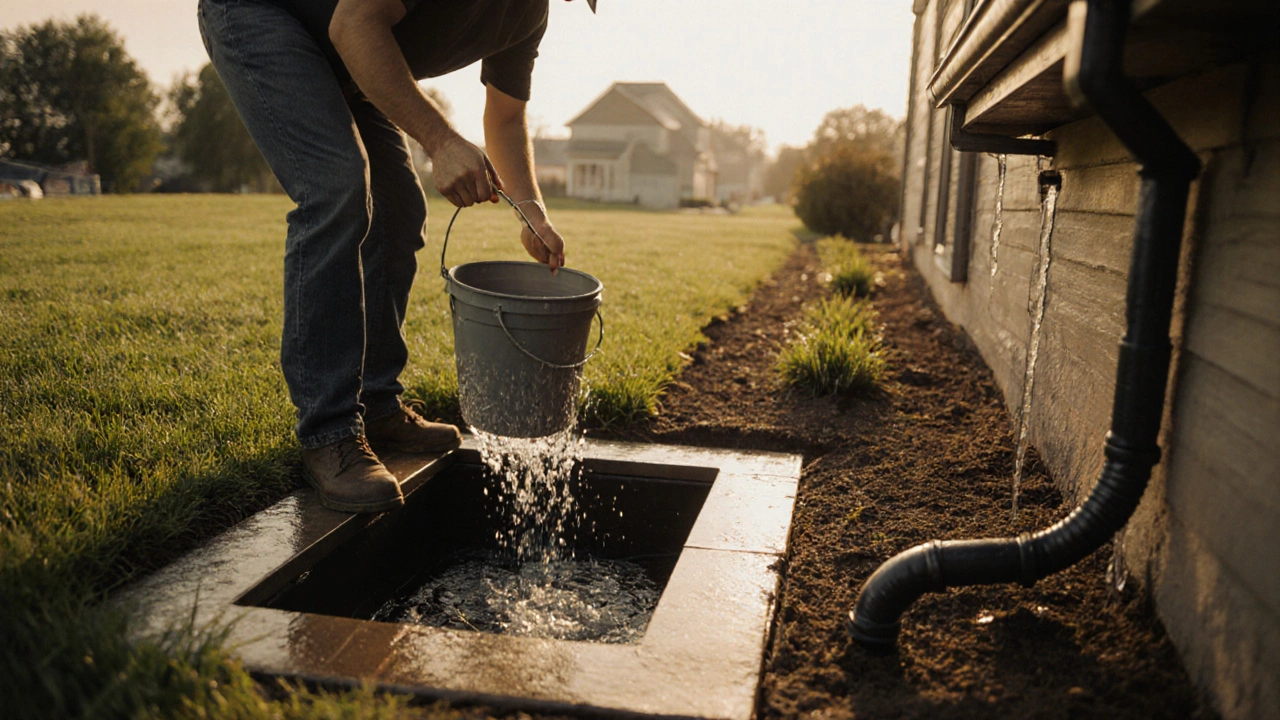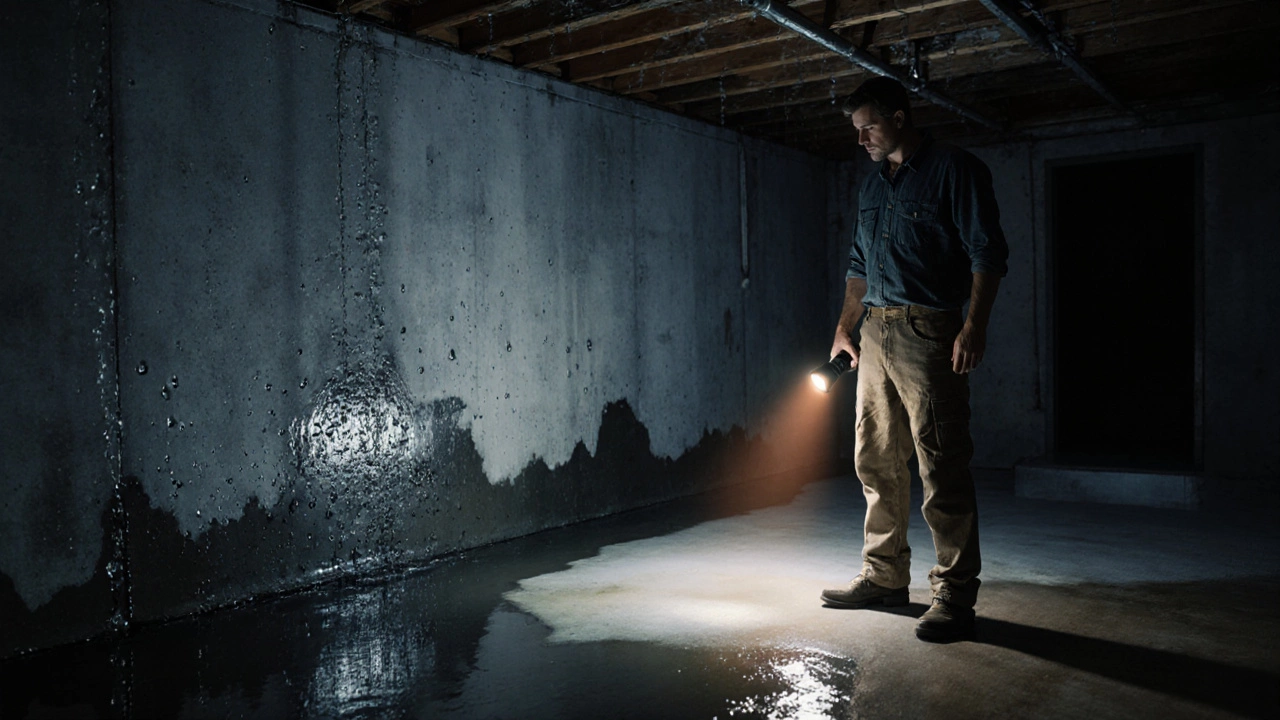Foundation Repair Cost Calculator
Select Your Repair Method
For best results, consider combining methods:
Key Takeaways
- Identify the source of moisture before starting any fix.
- Sump pumps are the fastest way to divert water away from the interior.
- French drains handle groundwater that seeps through walls.
- Crack injection seals structural fissures and restores strength.
- Good exterior drainage prevents most indoor leaks from ever happening.
When water starts dripping from walls or pooling on your floor, it feels like a nightmare. The good news is that most foundation leak repair tasks can be tackled with the right knowledge and a few tools. Below is a step‑by‑step roadmap that walks you from spotting the problem to sealing it for good.
What makes a foundation leak from the inside?
Even if the ground looks dry, water can pressure its way into a basement through tiny cracks or porous concrete. This pressure, known as Hydrostatic Pressure is the force exerted by groundwater when it builds up against a foundation wall, pushes water into any opening. Over time, freeze‑thaw cycles expand those openings, making leaks more frequent.
Two main culprits dominate the scene:
- Improper grading or clogged gutters that dump water right next to the footings.
- Cracks in the foundation caused by settling, tree roots, or soil movement.
Understanding which of these is driving the moisture will decide which fix you choose.
How to assess the problem
Before you tear down walls, follow this quick inspection checklist:
- Look for damp spots, salt stains, or mould on interior walls.
- Use a Soil Moisture Sensor to measure moisture levels in the yard around the foundation. Readings above 30 % often indicate a drainage issue.
- Check exterior grading. The soil should slope at least 5 % away from the house for the first 10 feet.
- Inspect gutters and downspouts. Any blockage can send a torrent right onto the footings.
- Probe the walls with a screwdriver. If it easily penetrates the concrete, you likely have a crack that needs sealing.
Document where the water appears, how often, and under what weather conditions. This log will help you match symptoms with the right solution.
Fix #1 - Install a sump pump
A Sump Pump is a self‑contained unit that sits in a pit at the lowest point of your basement. When water reaches the pump, a float triggers the motor and pushes the water out through a discharge pipe.
Steps to install:
- Excavate a pit about 2 ft deep and 1 ft wide, preferably near a wall with a leak.
- Place a Waterproofing Membrane around the pit to keep soil from contaminating the pump.
- Fit the pump, connect the discharge hose to a municipal drain or a safe outdoor area, and seal all joints with PVC cement.
- Install a battery‑back‑up or a water‑level alarm for power outages.
Cost ranges from £150 for a basic pump to £500 for a high‑capacity, backup‑ready model. The biggest advantage is that it actively removes water, protecting stored items and finished flooring.

Fix #2 - Build a French drain
A French Drain is a trench filled with gravel and a perforated pipe that channels groundwater away from the foundation before it can seep in.
Installation outline:
- Dig a trench 12‑18 in wide and 2‑3 ft deep along the interior perimeter of the basement wall.
- Lay a landscape fabric to prevent soil from clogging the pipe.
- Place a perforated PVC pipe (½‑in) with the holes facing down, then cover it with more gravel.
- Wrap the gravel with the fabric and backfill with soil.
- Connect the pipe to a sump pit or an exterior drainage outlet.
French drains cost roughly £30‑£45 per linear foot, including materials. They excel at handling constant groundwater seepage and are less intrusive than full‑wall waterproofing.
Fix #3 - Seal cracks with injection
When the foundation itself is cracked, a Crack Injection system can restore integrity. Polyurethane or epoxy resin is pumped under pressure, filling voids and expanding to seal the crack.
DIY injection process:
- Clean the crack with a wire brush and remove any loose debris.
- Seal the surface with a fast‑dry epoxy primer to prevent surface seepage.
- Attach the injection ports at intervals of 6‑12 in along the crack.
- Inject the resin until it oozes out of the ports, then cut the ports flush.
- Allow 24‑48 hours for curing before exposing the wall to water.
This method costs about £10‑£15 per linear foot of crack. It’s ideal for structural cracks that, if left untreated, could grow larger and compromise the whole slab.
Fix #4 - Apply an interior waterproofing membrane
An interior Waterproofing Membrane creates a sealed barrier on the inside of the wall. Products range from liquid‑applied paints to sheet membranes that adhere with a cement‑based adhesive.
Application steps:
- Prep the wall by removing loose plaster and cleaning dust.
- Apply a primer if the manufacturer recommends it.
- Roll or spray the membrane evenly, overlapping each pass by at least 6 in.
- Install a drainage mat on top of the membrane to direct any residual water to the sump pit.
Costs hover around £8‑£12 per square metre. While this doesn’t stop water from entering, it redirects it, buying you time before a more permanent exterior solution is possible.
Fix #5 - Improve exterior drainage
Most interior leaks trace back to exterior water management failures. Simple actions can cut down hydrostatic pressure dramatically:
- Re‑grade the soil so it slopes away from the house by at least 5 %.
- Install or clean gutters and downspouts; extend downspouts at least 3 ft away from the foundation.
- Consider adding a rain garden or dry well to absorb excess rainwater.
These measures are cheap-often under £200 for a typical three‑bedroom home-but they attack the problem at its source, reducing the load on any interior system you install.

Comparison of Common Interior Solutions
| Method | Typical Cost (GBP) | Effectiveness | DIY Difficulty |
|---|---|---|---|
| Sump Pump | £150‑£500 | High - actively removes water | Medium - requires plumbing basics |
| French Drain | £30‑£45 per ft | Medium‑High - diverts groundwater | Medium - digging and pipe work |
| Crack Injection | £10‑£15 per ft | High - restores structural integrity | Medium‑High - requires careful pressure work |
| Waterproofing Membrane | £8‑£12 per sqm | Medium - redirects water | Low‑Medium - rolling or spraying |
| Exterior Grading & Gutters | £100‑£200 | High - prevents most leaks | Low - landscaping basics |
Common pitfalls and how to avoid them
- Skipping the inspection. Jumping straight to a sump pump without confirming that water isn’t simply overflowing the floor drains can waste money.
- Using the wrong pump size. An under‑powered pump will cycle on and off, shortening its life.
- Neglecting the discharge outlet. Discharging water too close to the house recreates the original problem.
- Skipping back‑filling around French drains. Loose gravel left exposed erodes quickly, letting soil block the pipe.
- Applying membrane over dirty walls. Moisture and dust prevent adhesion, leading to air pockets.
Maintenance checklist
Even after a successful fix, a quick annual review keeps leaks at bay:
- Test the sump pump by pouring a bucket of water into the pit.
- Clear gutters after every major storm.
- Check the soil moisture sensor reading in the rainy season.
- Inspect exterior grading after any landscaping work.
- Look for new cracks after an unusually cold winter.
By staying proactive, you’ll save yourself from costly water damage and keep your home dry for years.
Frequently Asked Questions
Will a sump pump stop a leak caused by a cracked wall?
A sump pump removes water that has already entered the basement, but it won’t fix the crack itself. Pair the pump with crack injection or an interior membrane to seal the opening.
How deep should a French drain be placed?
Ideally 2‑3 feet below the slab, just above the foundation footings. This depth captures groundwater before it reaches the concrete.
Can I install a waterproofing membrane on a finished wall?
Yes, but you’ll need to strip any paint or plaster in the area, apply a primer, and follow the manufacturer’s curing time before regaining use of the space.
Do I need professional help for crack injection?
If the crack is longer than 4 feet or shows structural movement, a pro’s equipment and expertise are safer. Small, static cracks can be DIY for confident homeowners.
How often should I test my sump pump?
At least once a year, preferably before the rainy season. Run water into the pit until the float lifts and the pump shuts off.
